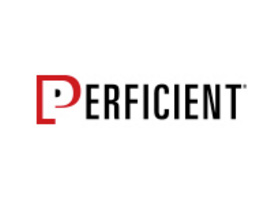What is WCAG? Web Content Accessibility Guidelines (WCAG) are a set of guidelines developed by the World Wide Web Consortium (W3C) to ensure that websites and web content are accessible to all users, regardless of their abilities or disabilities. WCAG provides a comprehensive framework for designing and developing websites that can be accessed and used […]
Back-End Development
Pivot and Submit Data through a Spreadsheet using Table Viewer in OneStream
Thing Planning Solution Perficient was recently engaged with a client that was implementing a Thing Planning solution to manage thousands of line items for their planning process. The client wanted to be able to look at a small set of data in a form and submit the changes to just those rows without having to […]
Principles of Web Accessibility
What is Accessibility? Accessibility is the practice of making your website usable for everyone. If the technology is accessible, each user can interact with it in ways that work best for them. The standard guidelines for web content accessibility are organized around four principles The Web Content Accessibility Guidelines (WCAG) are organized by four main principles, These four principles […]
Is Your Postman Delivering Too Much? Postman Alternatives
I’ve been a long-time user of Postman, and I’ve seen it grow throughout the years. All I need from Postman is a REST client to check my API endpoints. Recently though, as I opened Postman and had to click through three offers for services I will never use, I started thinking that I should take […]
Introduction to Kafka and MongoDB Integration
Introduction: Apache Kafka is a distributed streaming platform that enables businesses to build real-time streaming applications. First developed at LinkedIn in 2010, it has become one of the most widely used messaging systems for big data and real-time analytics. Kafka can process and transmit massive amounts of data in real-time, and its design ensures fault […]
Speed Up AEM Developer Onboarding with Container-Driven Local Instances
Customization is a key aspect of any AEM-powered solution. Installing AEM instances on developers’ local machines is usually required and recommended by Adobe. This allows for the fast creation of components, templates, and other project-specific items. The local AEM instances mimic an organization’s integration or dev environment instances with custom patch levels, OSGi configurations, data […]
SQL Tuning
In D & A Projects, building efficient SQL Queries is critical to achieving the Extraction and Load Batch cycles to complete faster and to meet the desired SLAs. The below observations are towards following the approaches to ensure writing SQL queries that meet the Best Practices to facilitate performance improvements. Tuning Approach Pre-Requisite Checks Before […]
Deploying a Sitecore Instance on a “Local” Kubernetes (k8s) Setup Pt2
In the first blog of this series (here), I laid the foundation of why I chose this POC and my investigation into potential tools such as MiniKube and Kind, and why these did not work for me. I eventually settled on AKS Edge Essentials from Microsoft. Now I will take a slightly deeper dive into how […]
Optimizely CMS 12 – Unique upgrade challenges
By now, a lot of us have already participated in one or more Optimizely CMS 12 upgrade projects. The others are still evaluating whether they should do it now or wait some more. Regardless of when you do it, there will definitely be some unique upgrade challenges you will come across, as I and many […]
Deploying a Sitecore Instance on a “Local” Kubernetes (k8s) Setup
Have you ever wondered about having a local Sitecore instance on a local deployment of k8s? I was curious and decided to dive headfirst into the unknown world of k8s virtualization on a local setup. In this blog series I will be sharing the details my journey, my findings the mistakes/successes, and the final state […]
Headful or Headless AEM? Why not both with Hybrid? – Part 2
Previously I presented a common situation where an engineering team might push for Headless AEM and covered why, in my opinion, a Hybrid solution is a better approach. I discussed how Content Fragments, Experience Fragments, and Sling Model Exporters are used in combination to deliver the Headless side of the AEM experience. In case you […]
You Just Got Vectored! SVG Image Formats
If you’re reading this, you’ve come across a need that nearly all Opti developers encounter in their careers; You need to correctly display a vector image format (SVGs and the like). The <IMG> tag just isn’t going to cut it anymore. Posts like this are a right-of-passage for Opti bloggers. “So,” you think, “if there […]











